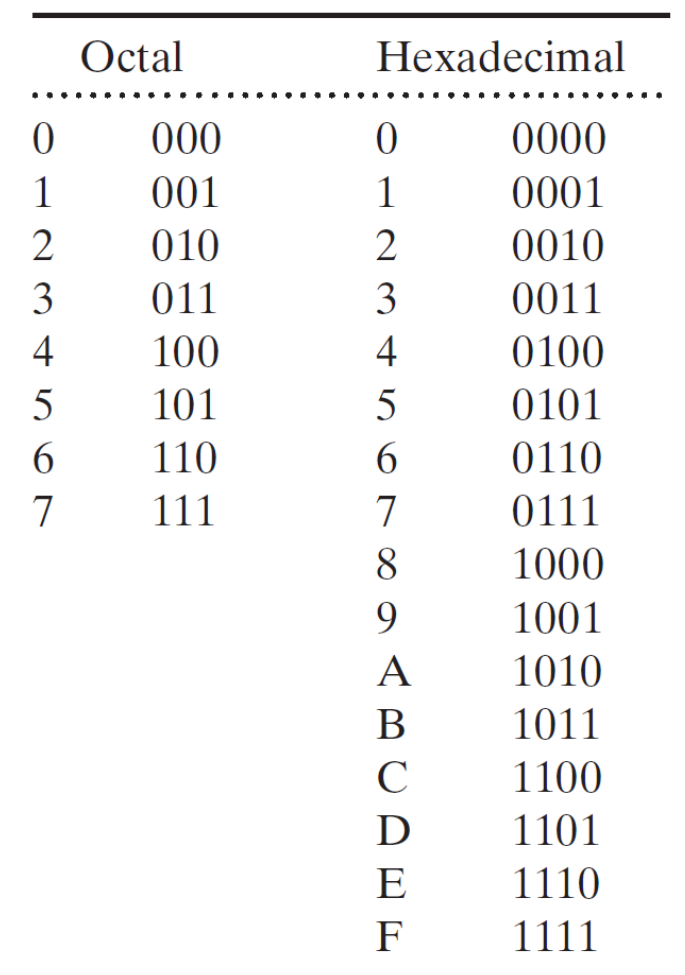Numbering Systems

Binary
$$ (1101){2} \arrow (1 \cdot 2^{3} + 1 \cdot 2^{2} + 0 \cdot 2^{1} + 1 \cdot 2^{0}){10} $$
Octal
Base $8$. Not used much…
Hexadecimal
$$\set{0, 1, 2, 3, 4, 5, 6, 7, 8, 9, A, B ,C ,D, E, F}$$
Can represent a 4 digit binary number $$(101011010.01){2} \rightarrow (1\ \ 0101\ \ 1010. \ \ 0100){2} \rightarrow (15A.4)_{16}$$
Binary Code Decimal format
Every decimal number is represented as four bits.
$$(3.2){10} \rightarrow (0011.0010){BCD}$$
Complementary Arithmetic
Used to easily subtract binary numbers.

The 2’s complementary can be found by negating the 1’s complementary.
